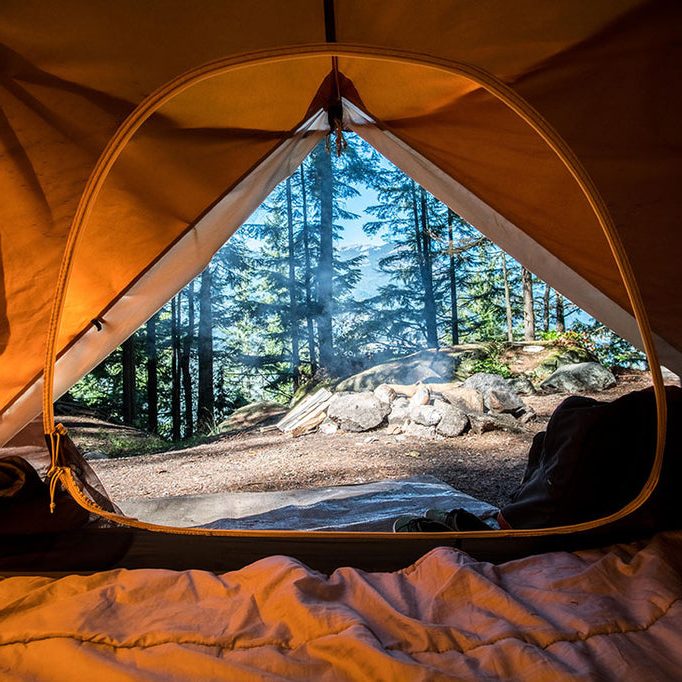What is Primitive Camping?
Primitive camping is a form of outdoor adventure that focuses on simplicity. It involves camping in areas without modern amenities like restrooms or electricity. This type of camping emphasizes self-reliance and living with minimal resources.
Defining Primitive Camping
Primitive camping, also known as backcountry camping, lets you immerse deeply in nature. It often takes place in remote locations, away from crowded campgrounds. Campers rely on basic gear, local resources, and survival skills. There are no modern facilities, so preparation is key.
How it Differs from Traditional Camping
Traditional camping often includes amenities like running water, toilets, and pre-set campsites. Primitive camping removes these conveniences, creating a more rugged experience. Traditional campers may use RVs, while primitive campers typically carry their essentials. This fosters a stronger connection to the natural environment and challenges campers to be resourceful.
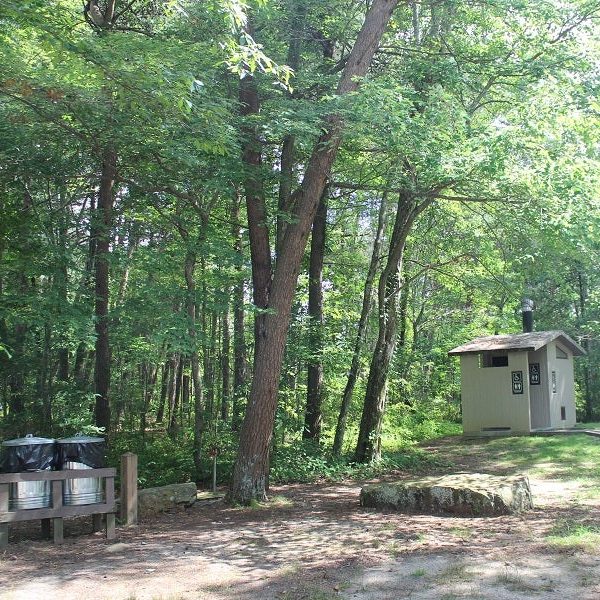
Benefits of Primitive Camping
Primitive camping offers a range of unique and rewarding benefits. It allows you to break away from the rush of daily life and experience nature in its purest form. Here are some of the main advantages of this minimalist way of camping:
Connecting with Nature
Primitive camping immerses you in untouched natural beauty. Without noisy campgrounds or modern distractions, you can fully appreciate the environment. You’ll hear the rustle of leaves, the chirping of birds, and witness undisturbed wildlife. This deep connection with nature promotes relaxation and mental well-being. Primitive camping also encourages mindfulness as you focus on the basics of survival and enjoy the peaceful world around you.
Cost-Effectiveness of Minimal Gear
Primitive camping is budget-friendly because it doesn’t require expensive gear. Minimal equipment like a tent, sleeping bag, and basic tools is enough. There are no fees for hookups or established campsites, saving you money. You’ll learn to make do with less, proving that outdoor adventures don’t need to cost much. By focusing on essentials, you learn to value simplicity and reduce waste.
Building Survival Skills
Primitive camping sharpens your survival skills by challenging you to live without conveniences. You’ll learn essential outdoor techniques like building a fire, filtering water, and navigating without technology. These skills boost your confidence and self-reliance in nature and beyond. Each trip improves your ability to adapt and handle unexpected challenges, making you a more capable adventurer.
Primitive camping enhances your connection to the natural world, teaches you to live minimally, and helps you grow. These benefits make it a uniquely fulfilling way to explore the outdoors.
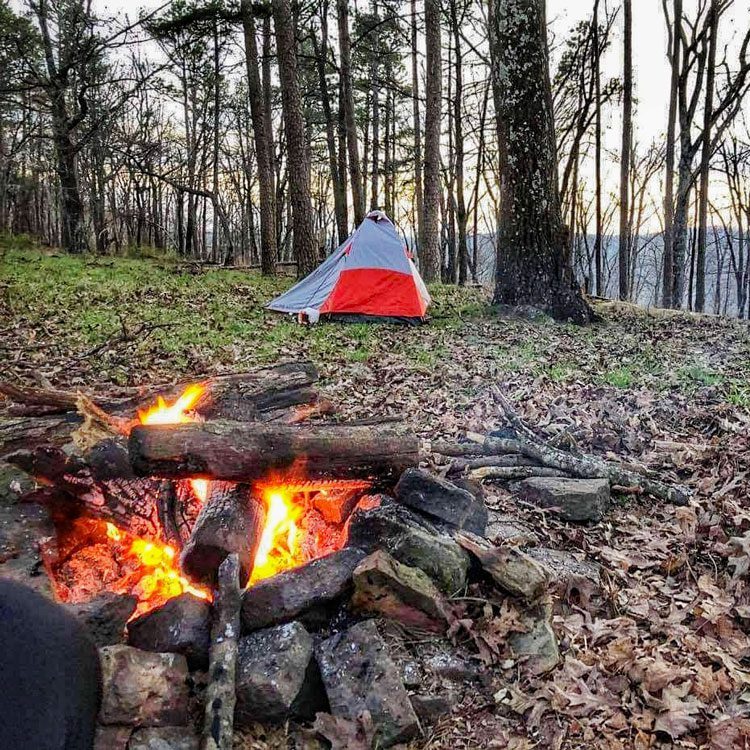
Essential Gear for Camping
Proper gear is crucial for a successful primitive camping experience. It ensures comfort, safety, and preparedness in the wilderness. Here, we outline essential items to make your adventure smooth.
Must-Have Basic Equipment
- Tent or Shelter: Choose a lightweight, weather-proof tent or tarp for protection.
- Sleeping Bag and Pad: Select a durable, insulated bag and pad for a comfortable rest.
- Fire Starter: Carry matches, a lighter, or a firestarter kit for cooking and warmth.
- Water Filter or Purifier: Safe drinking water is vital; pack a filter or iodine tablets.
- First-Aid Kit: Include bandages, antiseptic, and basic medications for emergencies.
- Navigation Tools: Use a map and compass for reliable guidance in remote areas.
- Multi-Tool or Knife: A versatile tool is necessary for cutting, repairing, or cooking tasks.
Clothing and Footwear
- Layered Clothing: Wear moisture-wicking base layers, insulating mid-layers, and outer layers suited to weather.
- Sturdy Footwear: Invest in durable hiking boots for rocky terrains and long hikes.
- Protective Accessories: Bring gloves, hats, and sunglasses to shield against weather extremes.
- Rain Gear: A waterproof jacket keeps you dry in unpredictable weather.
Optional Tools for Added Comfort
- Light Source: Headlamps or flashlights ensure visibility and safety at night.
- Cooking Equipment: Lightweight stoves, pots, or utensils improve meal preparation.
- Camp Chair: A compact chair adds comfort to your campsite setup.
- Bug Repellent: Protect yourself from insects with sprays or nets.
Having the right gear for primitive camping ensures a safe and enjoyable journey. Simplicity and preparation make all the difference in the wilderness.
How to Choose the Perfect Camping Spot
Choosing the right primitive camping spot is crucial for a safe and enjoyable experience. It requires research, understanding regulations, and considering safety aspects. Here’s what you need to know:
Researching Suitable Locations
Start by searching for camping areas that match your interests. Look for remote sites with scenic beauty, such as forests, mountains, or lakes. Check online forums and guides for recommendations on primitive camping spots. Verify accessibility and distance to ensure the location fits your plans.
Explore maps to identify places where primitive camping is allowed. Always avoid private properties unless permitted. Research the terrain to prepare for appropriate clothing, gear, and transportation.
Understanding Local Regulations and Permits
Many primitive camping spots have specific rules. Check the regulations of the park, forest, or region where you’ll camp. Some areas may require camping permits or restrict certain activities. Obtain permits in advance if needed to avoid last-minute issues.
Learn about fire restrictions that may affect cooking or campfires. Follow guidelines on waste disposal and respect local wildlife laws. These rules protect the environment while ensuring your stay is legal and hassle-free.
Safety and Accessibility Factors
Safety should be a top priority when choosing your camping spot. Avoid areas prone to flooding, landslides, or thick underbrush. Check the weather forecast for your chosen location to prepare for changing conditions.
Evaluate the accessibility of the site. Ensure you can reach it safely by foot, car, or other transport. Remote locations may require hiking, so assess your physical readiness. Avoid campsites far from water sources unless you carry enough for your needs.
Planning ahead enhances your primitive camping experience. Proper research, awareness of rules, and safety measures set you up for a memorable adventure.
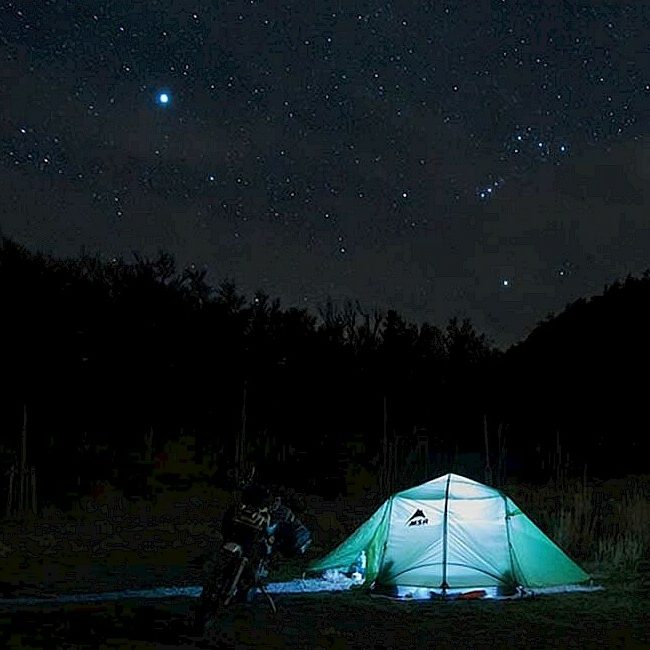
Planning and Preparation for Your Trip
Proper planning and preparation are key to a successful primitive camping experience. Managing your gear, meals, and anticipating challenges ensures a smoother adventure. Here’s how to get ready effectively.
Packing Light and Smart
Packing smart means carrying only essentials without overloading. Select items based on utility and weight.
- Compact Gear: Choose lightweight equipment, such as foldable tents and compact sleeping bags.
- Prioritize Basics: Limit packing to items like food, water filters, and navigation tools.
- Organized Storage: Place gear in waterproof bags for easy access and protection.
- Wearable Items: Carry layers of clothing for versatile, weather-ready adjustments.
Smart packing makes your trip manageable, saving energy and reducing physical strain during hikes.
Meal Planning and Food Storage
Efficient meal planning keeps you fueled and ensures food safety in the wilderness.
- Non-Perishable Meals: Opt for dried or canned food for easy storage and preparation.
- Calorie-Rich Options: Bring snacks like nuts, energy bars, and dehydrated meals for lasting energy.
- Portable Cooking Gear: Use lightweight stoves or utensils designed for outdoor use.
- Secure Food Storage: Lock food in bear-proof containers to prevent wildlife attraction.
Prepare versatile meals to save time. Ensure enough food is packed to match your trip duration.
Preparing for Unexpected Situations
Prepare for emergencies to handle challenges effectively. Focus on safety and adaptability.
- Emergency Kit: Pack a first-aid kit, multi-tool, and thermal blankets for urgent situations.
- Backup Essentials: Carry spare batteries for flashlights and extra navigation tools.
- Weather Gear: Bring rain jackets and durable footwear for unpredictable conditions.
- Knowledge of Local Hazards: Research natural risks like bears, floods, or extreme weather.
Anticipating the unexpected ensures you’re ready to adapt to challenges calmly.
Planning ahead, packing wisely, managing food, and preparing for emergencies create a safe and enjoyable primitive camping experience.
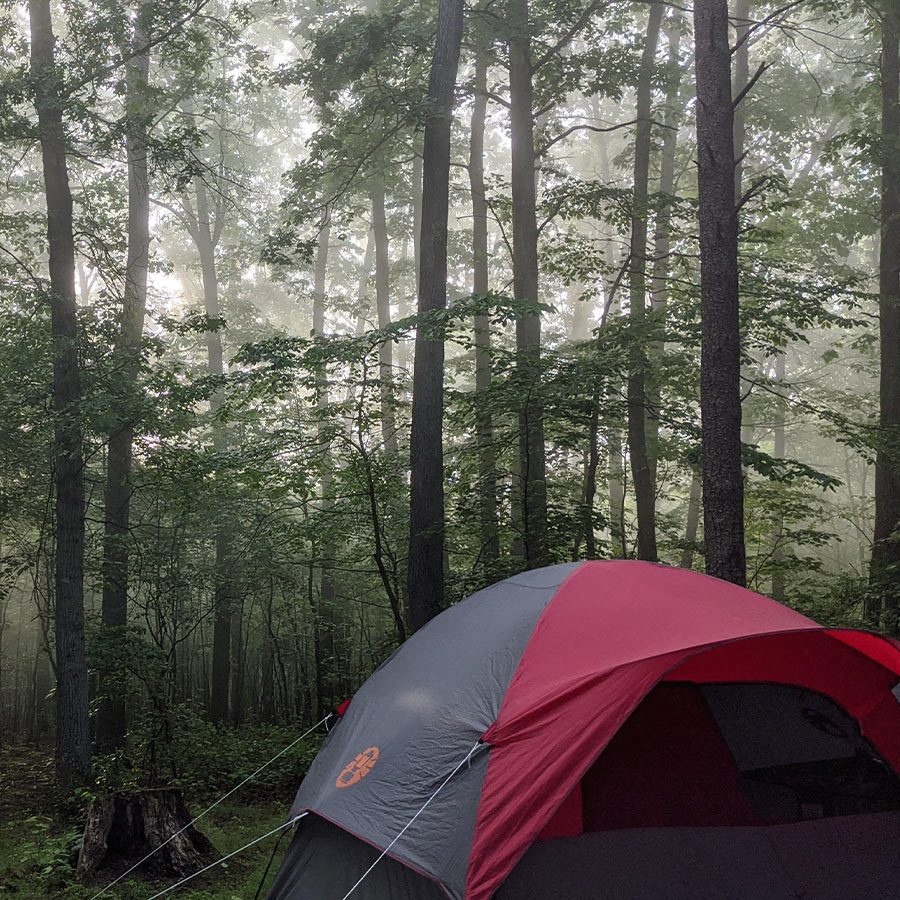
Tips for Staying Safe
Staying safe in nature is essential for an enjoyable primitive camping experience. This section outlines strategies to protect yourself and others during your adventure.
Wildlife Awareness
- Understand Local Wildlife: Research the types of animals in your camping area before you go.
- Store Food Properly: Use bear-proof containers to avoid attracting wildlife to your campsite.
- Keep a Safe Distance: Observe animals from afar and never try to feed or approach them.
- Carry Deterrents: Consider packing bear spray if camping in areas with bears or other predators.
- Make Noise While Hiking: This can help scare away nearby animals and alert them of your presence.
- Learn to Use a Map and Compass: These tools remain reliable when technology fails.
- Carry Physical Maps: GPS devices can lose signal, but printed maps always work.
- Recognize Landmarks: Identify natural features to avoid getting lost in unfamiliar terrain.
- Plan Routes in Advance: Mark your path before starting to ensure a smoother journey.
- Practice Navigation Skills: Familiarize yourself with navigation techniques before your trip.
First-Aid Essentials
- Carry a First-Aid Kit: Include bandages, antiseptic wipes, and medications to handle common injuries.
- Learn Basic First-Aid Skills: Knowing how to treat cuts and sprains is crucial.
- Pack an Emergency Blanket: It can help preserve body heat in case of sudden cold.
- Bring Extra Supplies: Carry additional gear like tweezers for splinters or small tools for emergencies.
- Stay Informed: Know local emergency contacts and procedures to act quickly in serious situations.
Safety is the foundation of a great primitive camping trip. Being prepared allows for a confident and enjoyable adventure.
Leave No Trace Principles for Primitive Camping
Primitive camping is about enjoying nature while protecting it. Leave No Trace principles ensure minimal impact on the environment. Following these guidelines helps preserve nature for future campers to enjoy.
Minimizing Environmental Impact
- Stick to Designated Trails: Always use established trails to avoid damaging plants and wildlife habitats.
- Camp on Durable Surfaces: Set up camp on rock, sand, or dry grass to prevent soil erosion.
- Respect Wildlife: Observe animals from a distance; do not disturb their natural behavior or habitat.
- Avoid Picking Plants: Leave flowers and greenery untouched to maintain the ecosystem’s balance.
- Reduce Light Pollution: Keep campfires small and avoid bright lights to protect nocturnal species and stargazing.
Proper Waste Disposal
- Pack It In, Pack It Out: Carry all trash with you, leaving no litter behind.
- Dispose of Human Waste Correctly: Use a portable toilet or dig a small hole far from water sources.
- Clean Cooking Equipment: Wash utensils with biodegradable soap away from natural water bodies.
- Avoid Toxic Products: Don’t use chemicals or items harmful to plants, soil, or waterways.
- Recycle and Reuse: Prevent waste by using reusable containers and tools.
By practicing these principles, you respect nature and ensure harmonious camping experiences. Primitive camping thrives on preserving the beauty and health of the wilderness.

Common Mistakes to Avoid as a Beginner
Primitive camping offers a unique and rewarding experience. However, beginners often make mistakes that could spoil the trip. Recognizing and avoiding these common pitfalls will help ensure a safe and enjoyable adventure.
Overpacking or Underpacking
Overpacking or underpacking can significantly impact your camping experience.
- Overpacking Issues: Carrying too much gear can make your backpack heavy and hiking tiring. It limits your mobility and uses up additional energy. Only bring essential items to keep your load manageable.
- Underpacking Risks: Forgetting crucial gear, like a first-aid kit or weather-appropriate clothing, can leave you unprepared. Plan and pack based on your camping destination and expected conditions.
- Solution: Create a checklist of necessary gear. Test your packed bag’s weight to ensure comfort while hiking.
Ignoring Weather Conditions
Failing to account for weather changes is a common mistake when primitive camping.
- Sudden Weather Changes: Weather in remote areas can change quickly. Not preparing for rain or cold can result in discomfort or emergencies.
- Wearing Inappropriate Clothing: Incorrect clothing choices can lead to overheating, hypothermia, or unnecessary struggles.
- Solution: Check the forecast and pack waterproof gear, insulating layers, and durable footwear. Always prepare for unexpected conditions, even in summer.
Neglecting to Inform Someone About Your Trip
Failing to share your plans can endanger your safety during emergencies.
- The Risk: If something goes wrong, rescuers won’t know where to find you. This can cause delays in help.
- How to Avoid It: Inform a trusted person about your camping location, duration, and expected return. Provide them with a detailed itinerary, including maps if necessary.
By avoiding these mistakes, beginners can enjoy a more secure and fulfilling primitive camping experience. Remember to prepare thoroughly and always respect nature.
